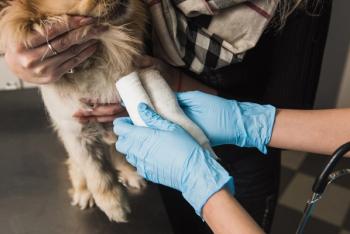
Elementary, my dear veterinary toxicologist
Dr. Tim Evans gives some fundamental toxicology tips and tricks to help out when it comes to finding the source in small animal intoxications and possible malicious poisonings.
"Is it toxic? How toxic?"
Here are some great electronic resources, hand picked by Evans himself.
General veterinary toxicology electronic resources:
>
>
>
U.S. government websites that provide helpful information for suspected toxications:
> U.S. Department of Health & Human Services:
> FDA
> NCBI
> National Institute of Environmental Sciences:
> U.S. Environmental Protection Agency
> Agency for Toxic Substances and Disease Registry
Useful toxic plant electronic resources:
> ASPCA:
> Cornell University:
> University of Pennsylvania:
> UIUC:
> Colarado State University:
> Erowid:
> Textbook:
Back to basics
What if that crazy pet owner convinced that their neighbor poisoned Chiquita the Chihuahua wasn't crazy at all? According to Tim Evans, DVM, PhD, DACT, DABVT, all veterinarians should know by their second day of practice that everyone has someone who dislikes them enough to want to seriously harm their pets. Intoxication in small animals is more often than not a balance act of investigating clinical signs to find a cause while treating a patient for the intoxication at the same time, and Evans has provided some bare necessities to help you find the source and treat the animal while you're at it.
Too many potential causes of a pet's clinical signs? DAMNIT!
You could be shouting this out for a number of reasons, but when it comes to toxicology, this expletive could really come in handy as a mnemonic device for veterinarians. Each letter stands for disease categories that can help you shorten the sometimes lengthy list of causes indicated by a sometimes equally lengthy list of clinical signs. Evans says to think each letter through thoroughly before moving onto the next one!
Degenerative/Developmental
Anomalous/Autoimmune
Metabolic/Mechanical/Mental
Nutritional/Neoplastic
Infectious/Inflammatory
Traumatic/Toxic
Click to the next page for more Sherlock sleuthing techniques.
Know your ABCs when it comes to patient stabilization
Regardless of the cause of the intoxication, most cases are often an emergency and require fast action. Removing the animal from the source of the unknown toxicant, otherwise known as “toxicant X,” should be your first step in stabilizing your patient-this could also be the other way around, with your removing “toxicant X” from the patient. Evans says to remember you're treating the patient, not the poison-unless there is dangerous exposure of “toxicant X” observed. After this has all been taken care of, it's time to remember your ABCs.
Airway. Maintaining awareness of obstructions or bronchoconstriction will help ensure that the airway is patent.
Breathing. You must establish normal breathing-make sure you're remaining aware of breathing problems or impaired gas exchange.
Circulation. Correct deficits in circulation. This could be caused by fluid, electrolyte or acid-base imbalances along with various anemias with different etiologies.
Depression. Make sure to correct metabolic disturbances and neurotransmitter imbalances by controlling the depression of the central nervous system.
Excitation. You should control the excitation of the CNS, but do nothing if very mild. You may need to make corrections of electrolyte imbalances and possible glucose deficits. This may also be the time when anticonvulsant medications come into play.
Fever. Avoid using nonsteroidal anti-inflammatory drugs (NSAIDs) for toxicant-induced hyperthermia to help bring down a fever.
Hypothermia. Make sure to treat hypothermia properly-no ice water baths!
Evans Extra: Poisoning should be suspected when:
> "Toxicant X" is directly observed in vomitus or gastrointestinal tract
> There is a sudden death or similar clinical signs in multiple animals
> There is rapid onset of afebrile syndrome or sudden death of a previously healthy animal
> There are signs of an unknown etiology or all other causes have been ruled out
> The pet has gone through a recent change in diet or location
Remember: Take the environment that the pet comes from into account
Listen for reports of:
>> Suspicious or illegal activities that occur in the area
>> Evidence of neighborhood or household feuds
>> The animal being described as as young, mean, noisy, annoying or stupid
Photo courtesy of Dr. Tim Evans. As the famous Sherlock Holmes says in The Adventure of the Dancing Men, "It is not really difficult to construct a series of inferences, each dependent upon its predecessor and each simple in itself. After doing so, one may produce a startling effect." When it comes to certain toxicology mysteries, we think Evans is inclined to agree with such a mad method. However, as a toxicologist he has to disagree with Holmes' tobacco pipe use.
Dr. Tim Evans is President of the American Board of Veterinary Toxicology, as well as an associate professor of Veterinary Pathobiology at the University of Missouri where he teaches clinical and diagnostic toxicology alongside his alter-ego, The Antidote: The enemy of ALL things toxic.
Newsletter
From exam room tips to practice management insights, get trusted veterinary news delivered straight to your inbox—subscribe to dvm360.




